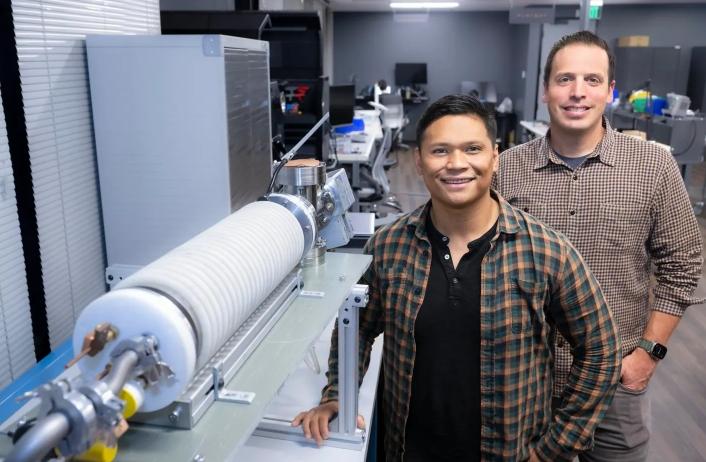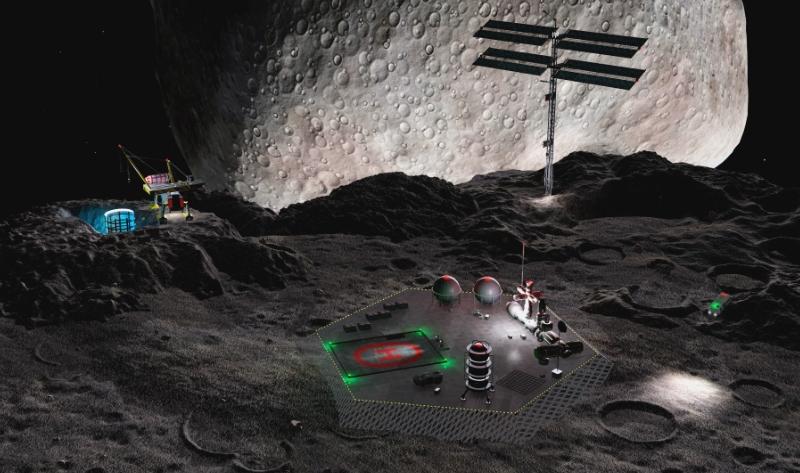The California-based Astroforge is running a tight ship with a daring venture to extract precious metals from space, blending high stakes with potentially astronomical returns.
In the early part of next year, a SpaceX rocket will embark on a journey, planting a drill on the Moon’s surface under its Artemis program. But here’s the twist: aboard this very rocket is a smaller vessel, aiming much farther, to an asteroid roughly nine months away. This spacecraft, christened the Brokkr-2, is Astroforge’s ambitious contribution to the growing dream of commercializing space mining.
Rewinding to a month ago, the company celebrated a key victory by successfully test firing the engines that will power this spacecraft to its distant target. This was an essential hurdle before the final assembly with the main rocket slated for next year’s launch. With this, Astroforge could potentially become the first private entity to venture beyond the territories of Earth and Moon.
Recalling that pivotal test, Astroforge’s co-founder and CEO, Matt Gialich, commented to Forbes:
“The fact that everything went off without a hitch – and you’re not seeing images of a catastrophic explosion – means we cleared that challenge. We’re now primed and ready to pioneer the world’s first commercial voyage into the depths of space.”
The idea of asteroid mining might strike many as a page from a sci-fi novel, but its roots are deeply pragmatic. As our planet steadily shifts from fossil fuels to electricity, there’s an escalating need for metals. However, Earth’s reserves are dwindling, and the prime mining locations are nearly exhausted. A recent analysis featured in the Proceedings of the National Academy of Science hints at escalating metal prices, which might “hamper the swift transition to clean energy.” The report further suggests that the pressing demand might push mining operations to less accessible and costlier sites, exacerbating both economic and environmental challenges.
Contrastingly, our solar system’s asteroids are treasure troves, brimming with future industry staples like cobalt, nickel, and platinum-group metals. These metals are not only abundant but are also found in richer concentrations than on Earth, leading to more efficient mining. Over time, this could revolutionize our approach, shifting the focus from Earthly extraction to leveraging space resources. This untapped market is precisely what Astroforge envisions conquering.
However, they aren’t the pioneers. In the 2010s, two significant players, Deep Space Industries and Planetary Resources, entered this arena amidst much applause. Together, they magnetized over $60 million in venture funds from giants like Bryan Johnson’s OS Fund. Yet, by the decade’s end, both shut shop. Astroforge’s founders, fully aware of this past, have closely liaised with these companies’ former teams, gleaning invaluable insights. The game-changer now, they assert, is the revolution in cost efficiencies ushered in by entities like SpaceX. A testament to this change, co-founder Jose Acain points out, is the dramatic cost reductions in deep space missions. A decade ago, they would have been financially prohibitive. Presently, thanks to co-rides on rockets, the Brokkr-2 mission’s estimated budget is a mere $10 million.
With a seed fund of $13 million, Astroforge is putting these cost dynamics to the ultimate test. Moreover, the contemporary space business landscape, rich in companies offering modular components, spares them the need to build everything from scratch. Earlier this year, Astroforge had already sent a spacecraft into orbit to trial its mineral processing tech.
Reflecting on the company’s prospects, space industry expert Chris Quilty shared with Forbes:
“Given the drastic reduction in launch costs, it’s entirely plausible that Astroforge might strike gold.”
Though he hasn’t dissected their business model minutely, the slashed launch prices have undoubtedly widened the horizons for space commerce.

Both pillars of Astroforge, Gialich (37) and Acain (39), are space engineering veterans. Acain’s resume boasts a stint at NASA’s Ames Research Center and four transformative years at SpaceX, while Gialich led software development for spacecraft at both Virgin Galactic and Virgin Orbit. Interestingly, their paths crossed outside space circuits, at the e-scooter enterprise, Bird. Both were on the radar for NASA missions at the Jet Propulsion Laboratory. Yet, the allure of groundbreaking space missions was overshadowed by the dread of prolonged bureaucratic tangles. This catalyzed the birth of Astroforge.
For its maiden voyage to the depths of space, the company has an M-type asteroid in its crosshairs, believed to be richer in metals than Earth. But here’s a catch – this expedition isn’t about mining. Instead, Brokkr-2 will simply reconnoiter the asteroid, mapping its geological features. This probe aims to set the stage for more ambitious future missions. NASA’s Psyche mission, also destined for an M-type asteroid, won’t land before 2029, giving Astroforge a head start.
If all goes according to plan, the firm will blueprint further missions to understand asteroids better, refine its extraction techniques, and strategize Earth-bound return trips. The endgame? Mining a whopping one to two tons of metals to be sold in spot markets. They believe that this space venture could outprice Earthly mining. For perspective, consider platinum’s current market value: a staggering $25 million per ton. The founders candidly acknowledge the risks, but the potential returns are too enticing to resist.
Capturing the spirit of their venture, Gialich remarked:
“We’re going all in. Every six months, it’s a high-stakes gamble. It’s this exhilarating challenge that drives us, and this ethos will steer Astroforge, till we either strike space gold or hit a dead end.”



